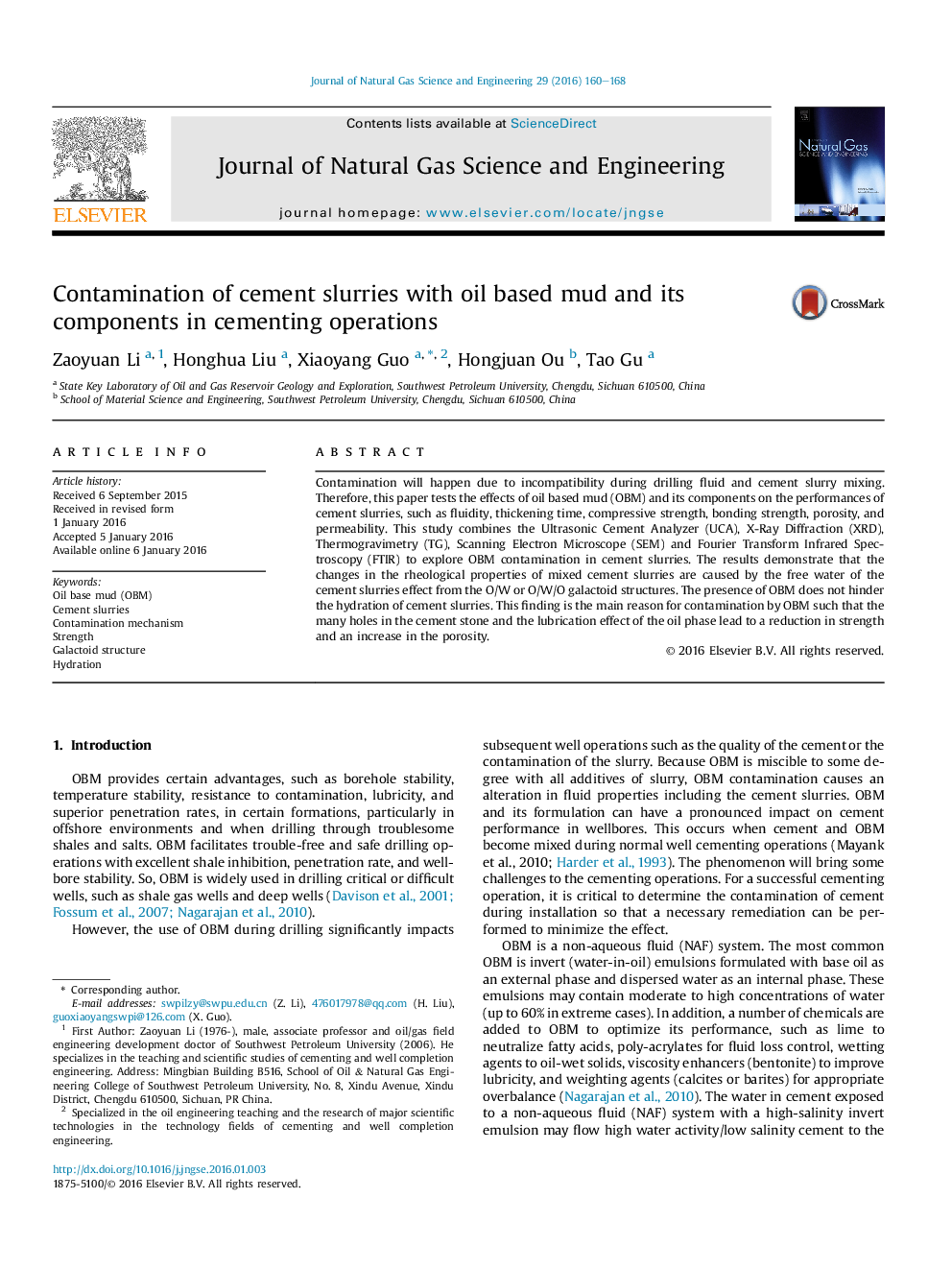| کد مقاله | کد نشریه | سال انتشار | مقاله انگلیسی | نسخه تمام متن |
|---|---|---|---|---|
| 1757349 | 1523012 | 2016 | 9 صفحه PDF | دانلود رایگان |
کلمات کلیدی
1.مقدمه
2 مواد و دستورالعملهای آزمایشگاهی
2.1 مواد آزمایشی
2.2 روشهای آزمایشی
2.2.1 تأثیر OBM بر عملکرد دوغابهای سیمانی
3 نتایج و بحث
3.1 عملکرد دوغابهای سیمانی آلودهشده با OBM
3.2 عملکرد دوغابهای سیمان آلودهشده با اجزای OBM
جدول 1.سیالیت و زمان تغلیظ دوغابهای سیمانی آلودهشده با OBM
شکل 1. سیالیت دوغابهای سیمانی مخلوط
شکل 2. مورفولوژی سنگ سیمانی مخلوط با OBM
جدول 2.خواص سنگ سیمانی آلودهشده با OBM
3.3 تحلیل میکروی دوغابهای سیمانی آلودهشده با OBM
جدول 3. عملکرد دوغابهای سیمانی آلودهشده با اجزای OBM
شکل 3. فرایند طرحواره از اینکه چگونه دیزل و امولسیون استحکام فشاری و سنگ سیمان را کاهش میدهند.
3.4 تحلیل میکروی دوغابهای سیمانی آلودهشده با اجزای OBM
شکل 4. منحنی تحلیل شدت التراسونیک برای دوغابهای سیمانی آلودهشده با OBM
شکل 5. طیف XRD سنگ سیمانی با مقدار OBM متفاوت
شکل 6. منحنیهای TG سنگ سیمان حاوی OBM.
3.5 سازوکار دوغابهای سیمانی آلودهشده با OBM
شکل 7. SEM از میکروساختار سیمانی حاوی OBM
شکل 8. SEM میکروساختار سیمانی حاوی اجزای OBM
شکل 9. FTIR سیمان حاوی OBM
شکل 10. طرحواره پوشش آب آزاد دوغاب سیمان
4. نتیجهگیری
• The oil based mud does not hinder the hydration of cement slurries but can destroy the cement skeleton.
• The “galactoid structure” is the primary cause of rheological variations for the contaminated slurries.
• Emulsion is the greatest impact factor in the components.
Contamination will happen due to incompatibility during drilling fluid and cement slurry mixing. Therefore, this paper tests the effects of oil based mud (OBM) and its components on the performances of cement slurries, such as fluidity, thickening time, compressive strength, bonding strength, porosity, and permeability. This study combines the Ultrasonic Cement Analyzer (UCA), X-Ray Diffraction (XRD), Thermogravimetry (TG), Scanning Electron Microscope (SEM) and Fourier Transform Infrared Spectroscopy (FTIR) to explore OBM contamination in cement slurries. The results demonstrate that the changes in the rheological properties of mixed cement slurries are caused by the free water of the cement slurries effect from the O/W or O/W/O galactoid structures. The presence of OBM does not hinder the hydration of cement slurries. This finding is the main reason for contamination by OBM such that the many holes in the cement stone and the lubrication effect of the oil phase lead to a reduction in strength and an increase in the porosity.
Journal: Journal of Natural Gas Science and Engineering - Volume 29, February 2016, Pages 160–168
